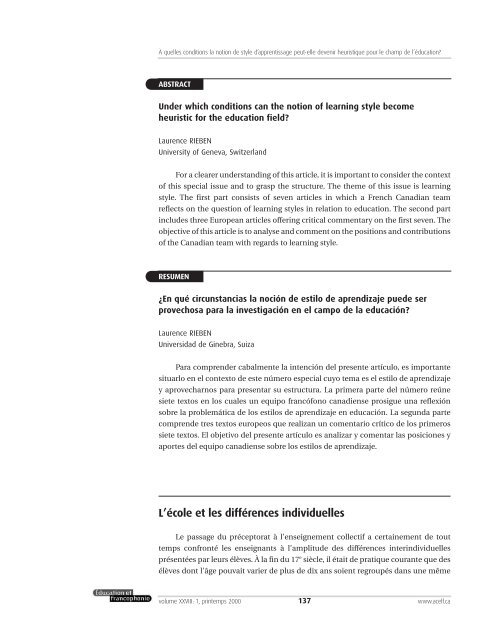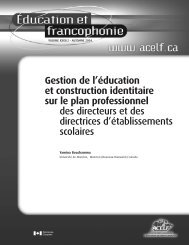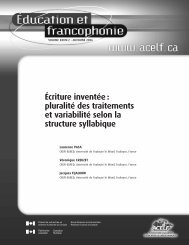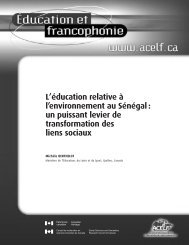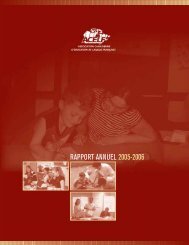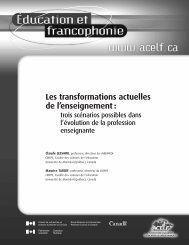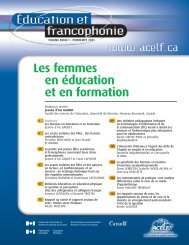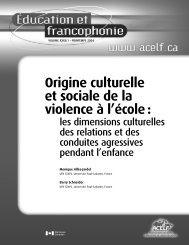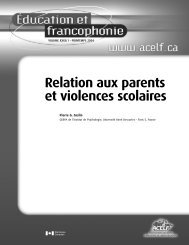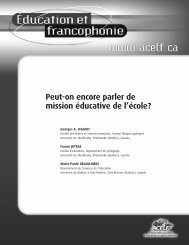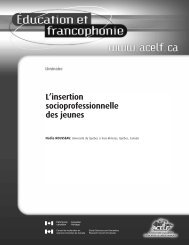You also want an ePaper? Increase the reach of your titles
YUMPU automatically turns print PDFs into web optimized ePapers that Google loves.
À quelles conditions la notion de <strong>style</strong> d’apprentissage peut-elle devenir heuristique pour le champ de l’éducation?ABSTRACTUnder which conditions can the notion of learning <strong>style</strong> becomeheuristic for the education field?Laurence RIEBENUniversity of Geneva, SwitzerlandFor a clearer understanding of this article, it is important to consider the contextof this special issue and to grasp the structure. The theme of this issue is learning<strong>style</strong>. The first part consists of seven articles in which a French Canadian teamreflects on the question of learning <strong>style</strong>s in relation to education. The second partincludes three European articles offering critical commentary on the first seven. Theobjective of this article is to analyse and comment on the positions and contributionsof the Canadian team with regards to learning <strong>style</strong>.RESUMEN¿En qué circunstancias la noción de estilo de aprendizaje puede serprovechosa para la investigación en el campo de la educación?Laurence RIEBENUniversidad de Ginebra, SuizaPara comprender cabalmente la intención del presente artículo, es importantesituarlo en el contexto de este número especial cuyo tema es el estilo de aprendizajey aprovecharnos para presentar su estructura. La primera parte del número reúnesiete textos en los cuales un equipo francófono canadiense prosigue una reflexiónsobre la problemática de los estilos de aprendizaje en educación. La segunda partecomprende tres textos europeos que realizan un comentario crítico de los primerossiete textos. El objetivo del presente artículo es analizar y comentar las posiciones yaportes del equipo canadiense sobre los estilos de aprendizaje.L’école et les différences individuelles<strong>Le</strong> passage du préceptorat à l’enseignement collectif a certainement de touttemps confronté les enseignants à l’amplitude des différences interindividuellesprésentées par leurs élèves. À la fin du 17 e siècle, il était de pratique courante que desélèves dont l’âge pouvait varier de plus de dix ans soient regroupés dans une mêmevolume XXVIII : 1, printemps 2000137www.<strong>acelf</strong>.ca


